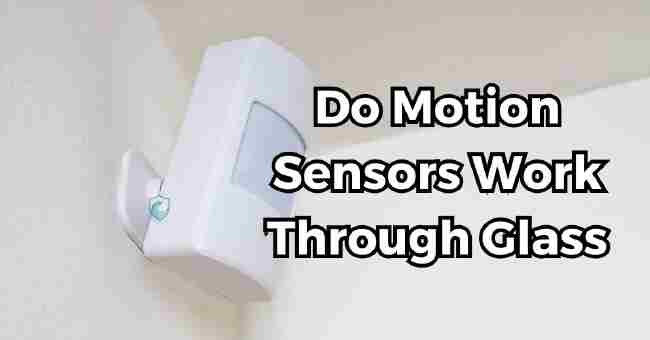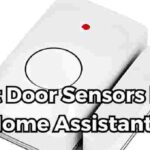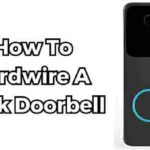Table of Contents
Have you ever wondered if those nifty motion sensors that are so popular in home security systems actually work when placed behind glass windows or doors?
As a longtime user of several systems from ADT to SimpliSafe over the years, it’s a question I’ve asked myself many times while positioning the sensors in various rooms.
After doing some digging and calling up my buddies who work for CSAA and NFPA, I’ve learned it’s a complex topic with a lot of variables at play.
The short answer is maybe – it depends on the type of glass, type of sensor, environmental conditions, and proper positioning.
In this comprehensive guide, you’ll get the insider tips I’ve compiled on maximizing motion detectors to work through glass using both conventional and alternative techniques.
I’ll also clue you in on some creative workarounds the home security pros use for those really tricky sliding glass doors.
Let’s get into the specifics.
How Motion Sensors and Detection Works
Before getting into the factors around glass interference, it helps to level-set on how the most common motion sensor technologies function in the first place.
The two main types you’ll encounter for home use are:
- Passive Infrared (PIR) Sensors – Detect changes in heat signatures and infrared energy to identify movement and bodies. Very common since they are inexpensive but can be impacted by glass.
- Microwave Sensors – Transmit low-power microwave signals that detect motion from the change in reflected energy. More expensive but better through barriers.
There are also other types like ultrasonic and video pattern analysis. I’ll focus on infrared and microwave though as they are the most affordable and widely used.
Passive Infrared (PIR) Motion Sensors
These sensors have small pyroelectric transducers that generate energy when exposed to heat and infrared radiation that objects like people emit.
They have Fresnel lenses or multi-element arrays that widen the field of view to 140-180 degrees typically.
When something with a heat signature like a person or animal moves within this field of view, the infrared energy projected changes quickly and is detected. This triggers the alarm system to activate.
Microwave Motion Sensors
Instead of sensing heat and IR energy, these types of motion detectors emit low-power microwave radiation around 5.8 GHz or 10 GHz outwards.
The transmitters beam the microwave energy typically in an overlapping array pattern into areas up to 30 feet away.
When motion happens from a person or other object, it changes how the microwaves reflect back to the receiver section of the sensor.
This change triggers an alarm condition to set off security notifications. Microwave motion detection can penetrate some materials better than passive infrared.
But as you probably guessed, glass and windows present some challenges for both technologies when it comes to security systems and motion sensor placement.
Do Motion Sensors Work Through Glass: Factors That Impact Motion Sensor Effectiveness Through Glass
Glass seems transparent but it actually blocks, absorbs, or otherwise filters certain signals and wavelengths – including some important to motion and security sensors.
Additionally, some coatings applied to glass like low-emissivity films can wreak further havoc.
Let’s explore key variables that govern whether motion detection works reliably through panes of glass:
Type of Glass
Not all glass is made equal when it comes to interfering with motion detection technologies:
- Single Pane – Easier for some IR and microwave signals to pass through. Minimal interference other than some reflection.
- Double Pane – Two panes with air gap diffuse signals more. Reflections from multiple surfaces.
- Tempered Glass – Treated for strength/shattering resistance. Can filter signals more.
- Low-E Coatings – Special insulating films block IR wavelengths. Major problems for PIR sensors.
- Tinted Glass – Popular for appearance but contains metallic oxides that hamper transmittance.
So for example, a PIR sensor may have difficulty detecting through modern, energy efficient Low-E double pane glass but work reliably behind a basic single pane window.
Glass Thickness and Films
The thickness of the glass pane directly impacts how much penetration motion detection signals have.
Tempered glass tends to be thicker for structural integrity compared to basic plate glass in the 0.25 inch to 0.5 inch range.
Any security films, decorative coatings, embedded mesh/wires, or smart glass Electronics make motion detection even more troublesome.
For commercial buildings and high security homes, specialized glass block pane construction where glass bricks are arranged into walls can severely attenuate sensor effectiveness.
Sensor Positioning and Line-of-Sight
The angle that glass installation is at relative to where motion detectors are mounted heavily dictates functionality.
Glass positioned at sharp angles reflects signals away from sensors more readily versus panels aligned perpendicular to detectors.
Obstacles like window framing, screens, blinds, exterior awnings or vegetation can also interfere with line-of-sight to moving objects through glass.
Proper placement free of major obstructions is vital even if minor signal filtering by the glass itself occurs.
Environmental Factors
External influences like weather, temperatures, and lighting conditions also change how glass interacts with motion sensors:
- Precipitation – Rain, snow, and condensation refract signals more.
- Cold Temps – Insulated glass with thicker panes blocks more when cold.
- Bright Sun – Sun glare off glass makes IR sensors activate less.
- Darkness – Some coatings block IR except when dark out.
For these reasons, motion detectors mounted behind glass often need adjustable sensitivity settings, thresholds, and timed delays to account for environmental variability.
Now that you know the main variables that make motion detection through transparent panes tricky, let’s move on to.
Optimizing Motion Sensors to Work Through Glass
While glass does present challenges for keeping motion sensors performing properly, newer technological advances along with intelligent placement can overcome many of these hurdles.
Select Sensors Designed to Handle Glass
Passive infrared sensors have come a long way in recent years with special capabilities targeted at their Achilles’ heel of glass visibility:
- Dual Technology – Combination PIR and microwave in one detector with sensor fusion. Much better through barriers.
- Multi-Frequency IR – Detects multiple infrared bandwidths better than through glass.
- Fresnel Lens – Specially designed lens array concentrates IR reception through obstructions.
For example, the Ring Alarm Motion Detector uses a dual-band infrared sensor with five interrogation zones optimized to work through glass.
It also has adaptive settings for high traffic and pet tolerance if positioned behind transparent partitions.
Similarly, brands like Honeywell and Bosch offer microwave and PIR combo units like the IS2500 Series optimized for challenging placements with line-of-sight barriers.
Adjust Settings For Environment and Glass Factors
Most modern motion sensors provide sensitivity or threshold adjustments to reduce false positives and nuisance activations.
Tweaking parameters like detection range, activation trigger level, and re-trigger time delay intervals help tailor functionality for surroundings.
For example, sliding glass patio doors with tinted double pane glass likely need a higher sensitivity threshold set than a basic front entrance way window.
Similarly, increased delay intervals would ensure someone lingers longer before triggering alerts if visibility through partially frosted bathroom glass causes occasional false activations.
Sensor Mounting Position and Height
Proper alignment free of visual obstructions in detection zones is mandatory for maximizing operation through glass.
Mounting on stable surfaces using lockable swivel brackets permits flexible aiming.
Recommended height tends to be around seven to eight feet looking slightly downward to avoid ambient IR sources like HVAC vents triggering the unit. This also enhances line-of-sight through paneled apertures.
For large commercial glass facades, distributed sensors properly overlapping coverage areas ensures few blindspots across barriers.
Low mount placements can compensate somewhat for downward looking trajectory of wall-mounted units.
With diligence taken in product selection, tuning, and positioning, reliable activity monitoring through many glass types is possible.
But what about those extra tricky situations where sensors just can’t seem to work reliably?
Next I’ll cover some handy alternatives and outside-the-box workarounds for particularly troublesome panes.
Alternatives for Motion Detection Through Challenging Glass
While modern detectors leverage various advances to ”see“ through windows and doors with moderate success, some circumstances like wired glass block walls leave sensors grasping at straws.
In these difficult use cases, security professionals often turn to video monitoring and supplemental triggers to enable glass-friendly protection.
Video Camera Systems
For large commercial glass facades or when esthetics supersede sensor installations, camera-based intrusion systems provide set-and-forget visibility including shadows and reflections to cue alerts.
Megapixel IP surveillance cameras from Hikvision, Dahua, and Axis continuously analyze imagery using algorithms tailored to variable light, weather, and seasons.
Activity like loitering, fence climbing, thrown objects, or broken glass instantly trigger notifications and stratified responses.
Streamlined remote access allows checking feeds anytime without reliance on infrared wavelengths or microwave reflection trickery!
Sonic Recognition Sensors
An innovative approach gaining traction relies on audio signatures rather than optics for glass penetration.
These listening devices ”hear“ minute vibrations in glass panes caused by tampering or breakage attempts tuning out ambient noise.
Featuring heavy duty mounting and calibrated sensitivity tuning, companies like Safetell provide acoustic glass break detectors compliant for high security banking environments.
While not technically ”seeing motion“ through glass, it completes protection schemes in other ways
Exterior Trigger Sources
Finally, when all else fails for keeping sensors reliably active through impenetrable interior obstructions, security integrators strategically place supplementary trip mechanisms outside on fences, barriers, or garage doors.
These keep alarms armed via alternate means should glass visibility fail entirely.
Approaches include beam break photodetectors, shock and vibration detectors on panes, plus SGS tag recognition for patrolling guards to log check-ins along perimeter zones.
External probes combined with interior video surveillance basically sandwich precarious glass segments!
While perhaps not as convenient as a lone inner-facing motion detector, the layered ordinal protection often satisfies risk requirements.
And it beats ripping up painstakingly installed display windows valued for aesthetics over function.
Now that we’ve come to the end of this glass visibility journey, let’s review the key takeaways.
FAQs:
Do Motion Detectors See Through Glass?
Motion detectors use passive infrared, microwave, or ultrasonic signals to sense movement and heat signatures.
So can they reliably detect activity through transparent barriers like windows and doors? It depends.
Glass seems invisible but actually blocks or reflects signals outside visual wavelengths.
Thicker panes with specialized coatings or films filter even more. However, advances in sensor tech plus smart placement help visibility.
Dual-tech detectors combining PIR and microwave improve glass penetration since both have strengths and weaknesses.
Models with fresnel lenses or multi-frequency IR also enhance transmittance. Proper alignment free of obstructions remains vital though.
With glass specifics factored into installation, many modern motion sensors do adequately function through panes, especially thinner untreated single panels.
But alternatives like exterior detectors or video analytics better handle highly insulated or treated glass when signals just can’t pass reliably.
Do Motion Sensor Cameras Work Through Glass?
Instead of separate detectors, security cameras with built-in motion sensing provide consistent visibility through obstructions that hamper microwaves or infrared.
Streaming video with recognition analytics works reliably through most glass.
Brand name Wi-Fi camera systems from Arlo, Nest, Ring, Eufy, and others perform automated motion event detection even seeing through windows.
Built-in algorithms analyze the video feed itself rather than relying on wavelengths blocked by coatings.
Sensitivity settings accommodate variable indoor lighting conditions. Battery or solar powered options install wire-free too.
Just beware of reflections or glare from exterior light sources that could impact motion detection performance. Otherwise, video analytics provide reliable through-glass capture.
What Sensor Detects Glass Breaking?
Specialized glass break detectors listen for the unique acoustic signature of glass panes being smashed or cracked.
This audio analysis works equally through single, double, or even triple pane constructions.
Glass break sensors like Honeywell SiXGB use advanced digital signal processing to filter ambient background noise and zero-in on glass fracture sounds.
Sophisticated tuning ALSO detects precursor stress or flexibility vibrations from tampering attempts before actual breakage.
Contact, tape on, and acoustic listened models suit different installation needs. UL certified sensors meet grade A commercial standards giving very reliable glass protection without reliance on optical motion or barrier transmission technologies.
Do SimpliSafe Motion Sensors Work Through Glass?
SimpliSafe utilizes proprietary “xinu” signal processing in their motion detectors for tolerance of minor through-glass interference.
Multi-path technologies help reduce dead zones plus adaptive sensing algorithms minimize false triggers, a common culprit when signals partially reflect off glass.
Strategic sensor placements in entryways or hallways with a direct line of sight through glass to prime detection zones maximizes functionality.
While not perfect visibility through thicker or coated panes, SimpliSafe outperforms many budget systems according to customer reports.
If unreliability issues sneak in from environmental factors, SimpliSafe’s customer support can remotely adjust sensitivity, pulse count, and time settings to tune out problematic activations.
This customization makes their motion detection about as glass-friendly as it gets.
Why Is My Ring Camera Not Detecting Motion Through Glass?
Assuming Ring cameras worked initially then lost motion visibility through windows, a few common factors are likely at play.
Seasonal solar intensity and reflection changes can confuse detection algorithms.
Camera position shift from mounting issues reduce sightlines. Limited night vision range also decreases through-glass capture.
First check if motion zones need adjustment to avoid triggers from tree branches or vehicles passing behind glass rather than interior movement.
Next recheck camera alignment to maximize viewing angle through panes without major sunlight overexposure.
If an indoor Ring cam still misses motion events clearly visible on camera, tweaking motion sensitivity higher under Settings > Device Settings > Motion Settings may be needed so algorithms analyze more of the steps and movement occurring behind the glass rather than tuning it out.
Do Microwave Motion Sensors Work Through Glass?
Microwave detectors transmit low power microwave radio signals that detect motion from changes in reflected energy – working through many non-metallic barriers.
This gives microwave sensors an advantage detecting through glass over passive infrared models.
Dual-tech motion detectors combining both microwave and PIR technology deliver even more reliable through-glass visibility.
Brands like Bosch, Honeywell, Paradox and DSC have glass-tolerant microwave models.
Proper installation angle aligning sensors perpendicular to windows rather than at sharp offsets maximizes microwave penetration.
Microwave sensors work better through single pane than multi-pane glass. Foil lined treatments like RFI tints prove very problematic to microwave penetration and should be avoided for detector placement areas when possible.
What Is The Difference Between A Glass Break Sensor And A Motion Sensor?
While both detect relevant security events, these sensor technologies take very different approaches:
- Glass Break – Listens for signature sound frequencies of glass fracturing. Triggers on actual glass breakage or tamper attempts rather than motion.
- Motion – Uses microwave, infrared, or ultrasound signals to detect moving objects and heat signatures passing through coverage zones. Activity and intrusion focused.
Glass break sensors from Honeywell, DSC, Bosch and others provide specialized protection against glass damage in vulnerable panes.
Motion sensors instead deliver wide coverage intruder detection, useful even through unamplified glass.
Dual tech models like those made by Paradox overlay both capabilities, detecting motion through glass AND unexpected glass breaking. This hybrid approach gives the best of both worlds.
Do I Need Glassbreak Sensor If I Have Motion Sensor?
The choice depends on risk factors. Motion sensors, especially higher end models, reliably detect people approaching, tampering with, or climbing through nearby glass panes already. So glass break detection seems redundant perhaps.
However glass damage sensors add rapid detection BEFORE compromise for windows in alarm zones.
This speeds response, especially for exterior windows, skylights, or display cases vulnerable to smash and grabs.
Motion detectors only activate once an intruder fully enters the protected space.
Another factor is glass break sensors detect fist impacts and tampering stress that precedes actual breaks.
This early warning better prevents successful compromise compared to waiting for human signatures limping through motion visibility coverage between panes.
The extra security layer also acts as redundancy if motion sensors have any intermittent visibility issues, fail to trigger from environmental factors, lose power, etc. making glass break sensors smart supplementary protection.
Conclusion and Review
I hope investigating whether modern motion sensors can overcome their Achilles’ heel of glass barriers shed light on this multifaceted challenge.
We covered a lot of ground debugging factors, specialized gear improvements and creative installations.
To recap the key pointers around pairing motion detection with windows and doors:
- Glass type plays a major role – Low-E insulating films particularly interfere
- Added glazing, films and coatings attenuate penetration significantly
- Sensor selection and adjustments must suit glass environment specifics
- Careful mounting and eliminating line-of-sight obstructions is mandatory
Where reliability remains elusive despite best efforts, supplementary perimeter alerts and video analytics fill protection gaps.
With knowledge of glass types and limitations combined with emerging detection advances, motion sensor functionality through panes does work more often than not these days.
Did you have any lingering questions I haven’t already answered about mixing glass and motion detection? Be sure to leave a comment below.
I’m happy to lend my veteran security installer wisdom to tricky dilemma not covered above.
Here’s to successfully securing those windows and sliding doors in style while keeping false alarms at bay.




